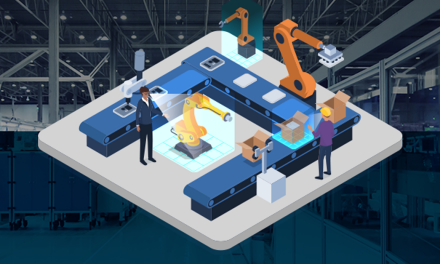New Research Finds Augmented Reality Devices in the Workplace Boost Short-term Productivity, Risk Long-term Innovation and Efficiency
INFORMS Journal Manufacturing & Service Operations Management New Study Key Takeaways:
- Augmented reality(AR) glasses provide immediate productivity benefits if used to help employees complete a task.
- Employees finish tasks 44% faster when using AR.
- AR reduces people’s ability to internalize tasks, meaning they simply execute without thinking through their actions.
- AR can be blamed for long-term declines in innovation and productivity.
BALTIMORE, MD – Companies that utilize augmented reality (AR) glasses as a new training and workforce tool to increase worker productivity risk stunting workforce innovation and ingenuity according to new research findings published in the INFORMS journal Manufacturing & Service Operations Management.
The study, “Seeing the Bigger Picture? Ramping up Production with the Use of Augmented Reality,“ finds that workers in a manufacturing environment are immediately faster at their jobs when instructed through augmented reality devices, compared to traditional paper instructions, yet they aren’t forced to internalize the actions. Thus, while augmented reality helps workers perform tasks in 44% less time, it creates other substantial problems down the road, including longer term declines in innovation and productivity.
The research was conducted by Heilbronn Enno Siemsen of the University of Wisconsin-Madison, David Wuttke and Ankit Upadhyay, both of Technische Universität München, and Alexandra Wuttke-Linnemann of Landeskrankenhaus Mainz. The researchers say these findings can help firms understand when to implement AR (and when not to). The findings may also trigger equipment manufacturers to plan for the future of AR devices more critically.
ABSTRACT:
Problem definition: Firms increasingly use augmented reality (AR) devices to improve their production ramp-up processes. These devices appear useful, yet little is known about their broader impact on worker productivity and behavior.
Academic/practical relevance: Efficient production ramp-ups are particularly important when product life cycles are short. An ongoing debate among academics and practitioners pertains to how Industry 4.0, and AR devices in particular, can accelerate the ramp-up. The current study provides empirical evidence related to AR in the production ramp-up context, examines the strengths and weaknesses of AR, and tests four hypotheses, leading to a more nuanced view of AR use in the manufacturing ramp-up.
Methodology: A framed field experiment in a manufacturing plant provides a test of how quickly workers can perform new tasks with and without AR support and how the use of AR affects their ability to suggest process improvements.
Results: When faced with a new task, workers instructed by AR smart glasses use 43.8% less time to complete the task compared with a control group that relies on paper-based instructions. However, workers that use AR glasses consistently use 23% more time than the control group when both groups repeat the task without either AR or paper-based instructions. Task difficulty moderates this relationship; workers assigned to a more difficult task benefit the most from AR instructions. After the devices are removed, workers instructed based on paper improve their productivity faster through learning than those instructed by AR. In addition, the former group suggests better process improvements than the latter one.
Managerial implications: Although these results indicate substantially higher productivity resulting from AR devices, they also support the view that, once instructed through AR devices, workers come to rely on this new technology without fully internalizing the task. This failure to internalize their task then leads workers to suggest less useful process improvements.











